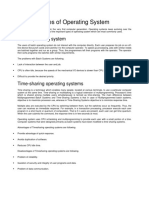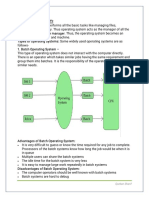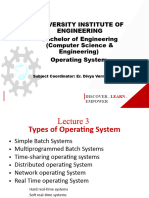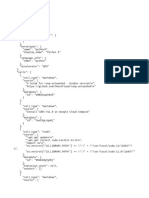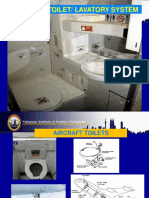0% found this document useful (0 votes)
83 views6 pagesTypes of OS
The document describes several types of operating systems:
- Batch operating systems group similar jobs together and run them non-interactively in batches. Time-sharing systems allow for multitasking by allocating small time slices to each task. Distributed systems connect independent computers over a network for remote access and shared resources. Network operating systems manage data, users and security on a server for shared access over a private network. Real-time systems have very strict time constraints to process inputs for applications like robots and air traffic control.
Uploaded by
AasthaCopyright
© © All Rights Reserved
We take content rights seriously. If you suspect this is your content, claim it here.
Available Formats
Download as PDF, TXT or read online on Scribd
0% found this document useful (0 votes)
83 views6 pagesTypes of OS
The document describes several types of operating systems:
- Batch operating systems group similar jobs together and run them non-interactively in batches. Time-sharing systems allow for multitasking by allocating small time slices to each task. Distributed systems connect independent computers over a network for remote access and shared resources. Network operating systems manage data, users and security on a server for shared access over a private network. Real-time systems have very strict time constraints to process inputs for applications like robots and air traffic control.
Uploaded by
AasthaCopyright
© © All Rights Reserved
We take content rights seriously. If you suspect this is your content, claim it here.
Available Formats
Download as PDF, TXT or read online on Scribd
/ 6
























